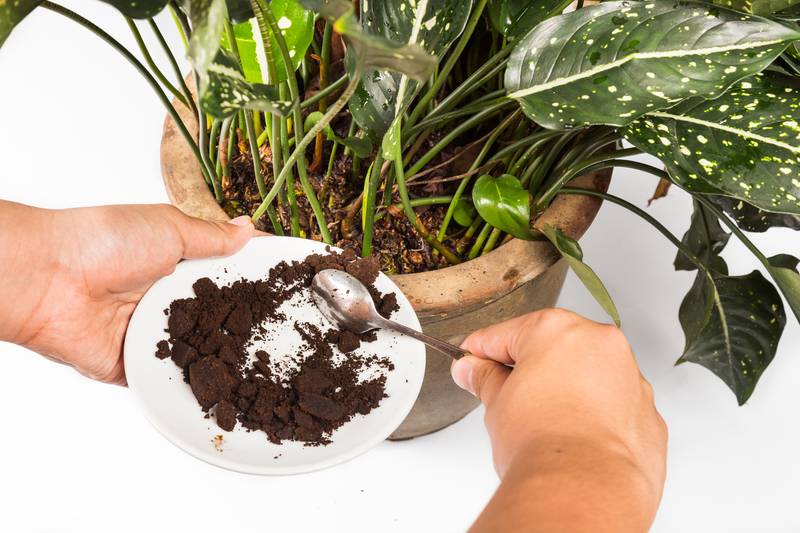Sow the seeds of change: Gardening for the climate
Posted on 19/09/2025
Sow the Seeds of Change: Gardening for the Climate
Gardening for the climate isn't just a trendy phrase--it's a powerful response to some of the biggest environmental challenges of our time. Whether you're a seasoned gardener or just getting your hands dirty, planting the right seeds today can have a transformative impact on the health of our planet tomorrow. In this guide, we'll explore the compelling intersection between climate-friendly gardening, biodiversity, and sustainable living. Get ready to unearth the secrets of gardening for our climate--one seed at a time!
Why Gardening Matters in a Changing Climate
The effects of climate change are visible in every corner of the globe: higher temperatures, unpredictable rainfall, and increasingly severe storms. But did you know that your own backyard can become a force for positive change? By gardening for the climate, you can:
- Capture carbon and help reduce greenhouse gases
- Boost pollinator and wildlife populations
- Conserve water and enrich soil health
- Support ecosystem resilience through plant diversity
- Strengthen your local food supply
The Power of Plants: Natural Carbon Sinks
Through the process of photosynthesis, plants pull carbon dioxide from the air--a major greenhouse gas--and lock it into their roots, stems, and leaves. Gardens rich in perennials, shrubs, and trees serve as mini carbon sinks, naturally helping to balance the planet's carbon cycle.

Five Principles of Climate-Smart Gardening
Ready to start your own climate action garden? Here's how you can sow the seeds of change right where you live:
1. Choose Climate-Resilient Plants
- Opt for native species that thrive in your region's climate, requiring less water and fewer inputs
- Mix annuals and perennials to create a resilient and diverse ecosystem
- Consider drought-tolerant and heat-loving varieties as summers grow hotter
- Plant trees and shrubs that offer long-term carbon storage
2. Practice Regenerative Soil Care
- Minimize tilling to protect soil structure and beneficial microbes
- Add organic compost to increase soil carbon and fertility
- Use mulch to retain moisture, suppress weeds, and build richer soil
- Plant cover crops in the off-season to boost nitrogen and organic matter
Healthy soils can store up to three times more carbon than the atmosphere--making soil stewardship essential to climate-friendly gardening.
3. Conserve and Harvest Water
- Install rain barrels or cisterns to collect and reuse stormwater
- Design rain gardens to slow and filter runoff, reducing flooding
- Group plants with similar water needs together to minimize waste
- Switch to drip irrigation for more efficient watering
4. Support Pollinators and Biodiversity
- Plant a broad array of flowering species for nectar and pollen
- Avoid chemical pesticides and opt for natural pest control
- Leave some wild areas for birds, bees, and beneficial insects
- Add water sources and nesting spaces for wildlife
Pollinator-friendly gardens not only help conserve iconic species like butterflies and bees, but also increase food production and garden beauty.
5. Grow Your Own Organic Food
- Reduce your carbon footprint by skipping store-bought fruits and veggies
- Focus on high-yield and staple crops that thrive in your microclimate
- Share surplus harvests with neighbors and your local food bank
- Compost kitchen scraps to close the nutrient loop
Benefits of Climate-Conscious Gardening
Let's dig deeper into the multifaceted benefits of gardening for the climate. Whether for the environment, your health, or your wallet, the rewards are impressive:
- Air Quality Improvement: Plants filter toxins and particulates, cleaning the air you breathe.
- Enhanced Biodiversity: Your garden becomes a safe haven for countless species.
- Reduced Urban Heat: Strategic planting offers shade and cooling--lowering city temperatures.
- Personal Well-being: Time spent in green spaces reduces stress, improves mood, and boosts physical health.
- Community Resilience: Community gardens help strengthen local ties and food security.
- Decreased dependence on fossil fuels--home-grown produce cuts transportation emissions.
Adapt Your Garden Practices for a Changing Climate
As weather patterns shift, gardeners must adapt their techniques to growing extremes. Here's how you can future-proof your "climate victory garden":
Monitor and Record Local Weather
- Keep a garden journal to track frosts, heatwaves, and rainfall patterns
- Adjust planting schedules based on real-time climate data
- Test soil moisture and shade levels often
Increase Plant Diversity
- Interplant vegetables, herbs, and flowers for pest control and resilience
- Cultivate a mix of deep-rooted, shallow-rooted, and nitrogen-fixing plants
Plan for Water Extremes
- Install swales, berms, or rain gardens to capture and slow water flow
- Choose water-wise plants that recover quickly after drought
Manage Pests and Diseases Naturally
- Encourage beneficial predators like ladybugs and birds
- Rotate crops annually to break pest cycles
- Use compost teas and natural remedies
Eco-Friendly Gardening Supplies and Habits
To go the extra green mile with climate-friendly gardening, pay attention to the products and energy use in your garden:
- Compost rather than bagging plant debris--return nutrients to the soil.
- Repurpose materials for trellises, beds, and mulches.
- Avoid synthetic fertilizers and peat moss--both have high carbon costs.
- Choose hand tools over gas-powered equipment for maintenance.
- Source seeds and plants from local nurseries to reduce transport emissions.
Garden Design Ideas for the Climate
It's time to rethink how we design our outdoor spaces. Gardening for climate resilience can be beautiful, productive, and ecological:
- Install a green roof or wall for urban cooling and wildlife habitat
- Create a pollinator corridor by linking your garden with neighbors' yards
- Start a community seed bank to preserve regionally adapted varieties
- Plant deciduous trees on the south and west sides for summer shade and winter sunlight
- Include edible perennials like rhubarb, asparagus, and berry bushes

Get Involved: Gardening Movements for Climate Change
You're not alone on this growing journey. Join global and local initiatives that amplify the collective impact of climate-positive gardening:
- The Million Gardens Movement: Encourages millions to grow their own food
- Pollinator Pathways: Connect green spaces for insects and birds
- Urban Greening Projects: Transform city lots into climate-adaptive green spaces
- Citizen Science Networks: Join climate and biodiversity monitoring efforts
Educational Resources and Further Reading
To deepen your understanding of gardening for the climate, explore these reputable organizations:
- The Royal Horticultural Society (RHS): Sustainable gardening guides
- American Horticultural Society: Climate-smart gardening resources
- Project Drawdown: Nature-based climate solutions
- Local Master Gardener Programs
Conclusion: Plant Today, Transform Tomorrow
Every seed you plant is a vote for the future. By embracing gardening for the climate, we connect with nature's cycles, inspire our communities, and build hope for a greener, cooler, more resilient planet. Small actions--mulching, composting, choosing pollinator plants--combine to form a powerful climate solution.
Sow the seeds of change in your garden today. Join the global movement for climate-friendly gardening and discover how your hands can help heal the Earth.
FAQs: Climate-Conscious Gardening
- Can a small garden really make a difference?
Absolutely. Millions of gardens, even if tiny, collectively provide vast carbon benefits, biodiversity boosts, and food security. - What is the most climate-positive plant I can grow?
Trees have the largest long-term impact, but any native perennial provides lasting climate and habitat value. - How do I garden sustainably in drought or flood-prone regions?
Focus on water-wise plants, mulching, rain capture techniques, and raised beds or contour planting for water management. - Where can I learn more about climate-smart gardening?
Connect with local botanical gardens, master gardener programs, and reputable environmental organizations for clinics and workshops.
Ready to dig in? Your garden can be part of the climate solution.
Sow the seeds of change, and watch a more sustainable world take root.

